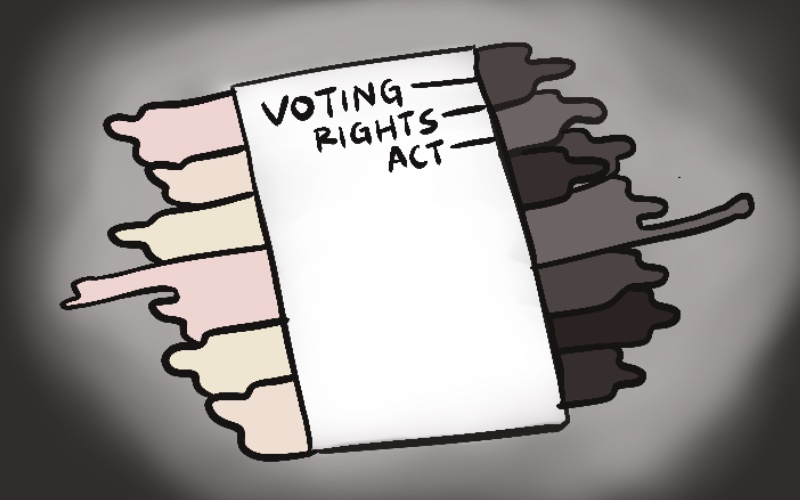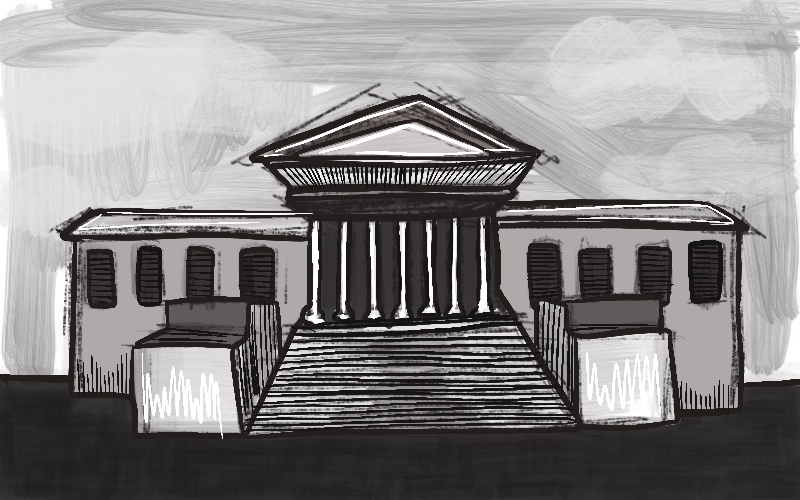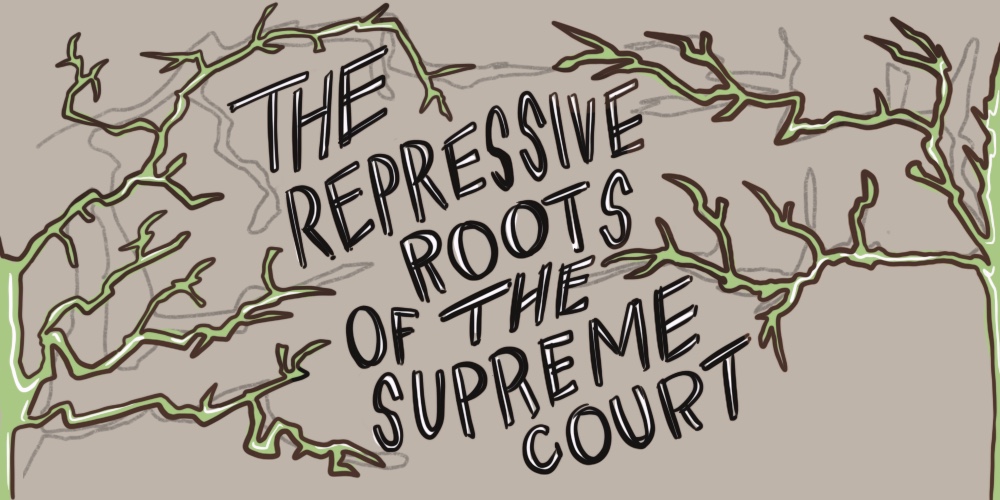Crispus Attucks was one of the first martyrs of the American Revolution. Half Black and half Native American, Attucks had escaped slavery to work the whaling ships of Boston, where, on March 5, 1770, he was part of a crowd of colonists confronting British soldiers. When the soldiers opened fire on the crowd, Attucks and four others were killed, in what would come to be known as the Boston Massacre. The Revolutionary War would see many other African Americans fighting side by side with their white counterparts for liberty, but the U.S. Constitution would categorically divide them — and the Supreme Court would enforce that division.
Since its defense of the Civil Rights Act of 1964, the Supreme Court has been embraced by many progressives as a force for good. The recent confirmation of Amy Coney Barrett, however, has tilted the Court in favor of conservatives. As troubling as this orientation may be, it is in fact a return of the Court to its historical role in stymying, rather than supporting, progressive movements.
In “Why Is There No Socialism in the United States?” James Gray Pope, a professor of law at Rutgers University, points to multiple cases decided by the Supreme Court which effectively divided the U.S. working class along racial lines, thus preventing the formation of a successful progressive movement. I recently spoke with Pope about the Court’s role in reinforcing racial divisions, how those divisions were intended to divide the working class, and how the Court today might yet be pushed to progressive ends. Our conversation below has been edited for clarity and brevity.
Arvind Dilawar: In “Why Is There No Socialism in the United States?” you argue that the Supreme Court helped sabotage working-class movements by reinforcing racial divisions. How?
James Gray Pope: If I had to put it into a soundbite, I would say that the Court created a legal environment in which white workers were split off from Black workers. How did the Court initially separate white workers from Black workers? Basically by removing the incentive for white workers to ally with Black workers.
It actually started before the Supreme Court existed. White and Black workers naturally tended to cooperate. There could be an awful lot of racism and still they would join together. They cooperated in Bacon’s Rebellion in 1676, and they cooperated in many group escapes and forms of group resistance around that time. So after the Rebellion was crushed, white planters passed a series of race laws that offered rewards to white laborers for helping to control Blacks. That was the beginning of the slave patrols. It was also the beginning of the legal category of “white” and the dominance of racial solidarity over class solidarity.
About a century later, the American Revolution shook things up, and white workers and Black workers cooperated again, this time in some of the same mobs that are celebrated in American history. Crispus Attucks in the Boston Massacre — that was a working-class protest in which white workers and Black workers both participated. Sailors in particular were a racially integrated group that fueled a lot of the revolutionary protests that raised the temperature prior to the American Revolution.
We all know what happened next: The U.S. Constitution, with its fugitive slave clause and three-fifths clause, and other provisions designed to preserve slavery. It’s at this point that the Supreme Court comes in. It takes those provisions, which don’t actually mention race, and hammers them into a rigid race line in decisions like Dred Scott v. Sandford (1857), where the Court said that the Black man had no rights that the white man was bound to respect.
What does that have to do with splitting white workers from Black workers? Well, it confirms a social order in the North where free Black people have virtually no rights. And so if you are a white worker in the North and you’re looking for allies, Black workers are not going to look very valuable to you, because they typically don’t have the vote, and if they strike or protest, they just open themselves up to retaliation. Under another Supreme Court ruling, Prigg v. Pennsylvania (1842), slave-catchers could go into northern states and kidnap Black people out of those states and return them to the South, and the victim would have no opportunity to prove that they were free. So even free Black people were in a position kind of like undocumented immigrants today — only worse, because their alternative was to get returned to a slave state.

Again, around the Reconstruction Era, as soon as Black people started to get rights, all of a sudden white people started to think of them as potential allies. And so you had cooperation developing in the cities of the South right after the Civil War and also in upland areas of the Carolinas, areas where the plantation economy wasn’t well established. And then, again, around the late 1880s, 1890s with the Knights of Labor, the populist movement, and the early American Federation of Labor — in each of these periods, Black workers and white workers broke through the prevailing racial norms to cooperate, and the Supreme Court intervened against them.
AD: Is that because the Supreme Court is not an actual representative of white workers, but a representative of the capitalist class?
JGP: You said it. Take for example United States v. Cruikshank (1876). In terms of sabotaging working-class movements, Cruikshank is probably the single most important Supreme Court decision ever.
It goes back to the beginning of Reconstruction. Black people were organizing and forming alliances with white people, and that was a deadly threat to the white elite in the South — in part because Black people made up a majority of the electorate in several states and a huge minority, over 40 percent, in four other states. So if Black people were allowed to exercise their rights, they’d have an enormous amount of voting power. At this point, they’re tremendously valuable, potentially, to white workers as allies. As W.E.B. DuBois put it, this was “the greatest opportunity for a real national labor movement which the nation ever saw.” And so the response was terrorism: night-riding. A lot of white people, even white people who were very racist, didn’t approve of the night-riders, but if the night-riders showed up at your house in the middle of the night and said, “You better come on this raid or else,” they tended to do that.
So Congress enacted the Enforcement Act of 1870, which made it a federal crime to gang up and interfere with a person’s civil rights. Prosecutors brought hundreds of cases against night-riders, and mixed-race Southern juries delivered convictions. Lower federal courts upheld the prosecutions, and by 1872, Frederick Douglass was celebrating a modest victory. He said that the slaughter of his people had mostly ceased.
Cruikshank arose out of a dispute over election results in 1872. There was a pitched battle on Easter Sunday of 1873. Black Republicans had seized the courthouse in Grant Parish, Louisiana, in order to confirm their election victory. Grant Parish was majority Black, but whites mobilized from all the surrounding counties. They had military-grade weapons and twice as many people, and they defeated the Black Republicans. Afterward, a group led by Cruikshank, a wealthy planter, massacred somewhere around 30 to 50 Black prisoners. This is a new kind of terrorism, paramilitary terrorism conducted in broad daylight by unmasked people, a lot of whom were wearing Confederate uniforms. Cruikshank and others were charged and convicted by a mostly white jury under the Enforcement Act.
To make a long story short, the Cruikshank decision overturned the convictions and effectively nullified the Enforcement Acts, immunizing this kind of paramilitary action against federal law enforcement. After Cruikshank, white supremacists felt free to attack not only “uppity” Blacks, but also their white allies. Before long, it was virtually impossible to organize Black workers in the countryside, and attempts at integrated organization were viciously suppressed.
AD: In your essay, you also mention Giles v. Harris (1903) and Hodges v. United States (1906). Why are these cases significant?
JGP: Hodges is similar to Cruikshank. It is a case in which whites went on a violent rampage to exclude Black workers from jobs in sawmills. They were prosecuted under federal law and the district court judge upheld the prosecution, but the Supreme Court overturned it on the ground that Congress had no power to prevent whites from driving Black workers from their jobs. If Hodges had come out the other way, it might have helped labor leaders who were trying to fight racial exclusion in unions. Instead, it seemed to validate exclusionary policies.
Giles v. Harris was a voting rights case under the 15th Amendment. The Constitutional claim was that Alabama voting officials were effectively excluding Black people from voting. And Justice Oliver Wendell Holmes basically said, even if this violates the Constitution, there’s nothing we can do about it, because most white people in Alabama are determined to keep Blacks from voting, and if the court issues an order, it will be a dead letter. Naturally, Holmes didn’t confess that it was the Supreme Court’s ruling in Cruikshank that had given whites the power to make a dead letter out of the law.
Giles had a similar effect on the populist movement that Hodges had on the labor movement. Black and white farmers had come together to challenge the one-party rule of the planter-dominated Democratic Party. For a time, southern white populists supported Black suffrage and opposed lynch law. But with Black organization suppressed, there was nothing to stop white planters from fraudulently counting Black votes for the Democrats. Many populists turned against Black suffrage, and Giles validated their strategy.
AD: Since its defense of the Civil Rights Act of 1964, the Supreme Court has been embraced by progressives as a force for good. How and why did the court change in the ’60s?
JGP: First, during World War II, Black people were very important to the war effort, including fighting. And incidentally, that’s a parallel with the Civil War. One of the reasons why the Reconstruction amendments passed, and why there was such a moment of Black-white cooperation there, was because Black soldiers played such a crucial role in winning the Civil War. That had a huge political effect, and it did in World War II as well. When Black soldiers were dying for the United States, it became harder for whites to ignore the hypocrisy of claiming to be a beacon of freedom while denying them basic rights. That created an opening for the Civil Rights Movement.
The second is the Cold War. It was extremely embarrassing to the United States to have segregation publicized internationally in a period when the US was on the side of colonial powers against national liberation movements around the globe, including in Africa. So the U.S. government came down the side of the Civil Rights claimants hoping to remove that embarrassing stain.
Finally, the change wasn’t that big a change. You have to keep in mind that in celebrated decisions like Brown v. Board of Education (1954), the Court was merely following national public opinion and taking on the regional Jim Crow system. So it’s not like the Court was being a counter-majoritarian force. You could say that the Court was just partially offsetting the fact that Black people in the South still didn’t have voting rights — thanks largely to the Court’s own rulings in cases like Cruikshank and Giles.
AD: How do you think the current composition of the Supreme Court will impact its relationship to interracial, working-class organizing? Or is it not really as much about the composition of the court as it is about the politics around it?
JGP: It’s no secret that the current Supreme Court majority is ideologically opposed to unions and worker collective action — and that’s exactly where workers of all colors have the greatest incentive and opportunity to join together. So I think we can expect the Court to continue issuing anti-labor decisions that will obstruct interracial organizing.

AD: Will it take renewed pressure from both international and domestic groups to defend labor and make the Supreme Court perhaps more of a progressive force once more?
JGP: Definitely. We’re in a period that, in some ways, resembles the early twentieth century. The Supreme Court majority is bitterly anti-labor and has little respect for democracy, as you can see from its voting rights and gerrymandering decisions, and we’re probably stuck with that for the foreseeable future. Back then, it took militant working-class action, including a wave of factory occupations in 1936 and 1937, to push the swing Justices in a more progressive direction. And today, it will probably take a lot more of the kind of activity we’ve seen in Black Lives Matter and Red for Ed to do the job.
As for the international element, I don’t really have a prediction. The Movement for Black Lives definitely has an internationalist orientation, and a strong international movement could bring additional pressure to bear. It’s also conceivable that we might see something like what happened in Canada, where international labor rights norms influenced their Supreme Court to recognize constitutional rights to bargain collectively and strike. Canadian diplomats got tired of being scolded for their country’s violations of labor rights. Maybe, at some point, our diplomats might start caring about that. Many of our labor laws defy international norms, including bans on public worker strikes, the flat ban on secondary strikes and boycotts (which has an especially devastating effect on the opportunities for interracial worker solidarity), the rule that strikers can be permanently replaced, and the lack of any effective remedies for employer violations of the right to organize. All of those could be done away with if we were able to move the Court in a progressive direction. •




